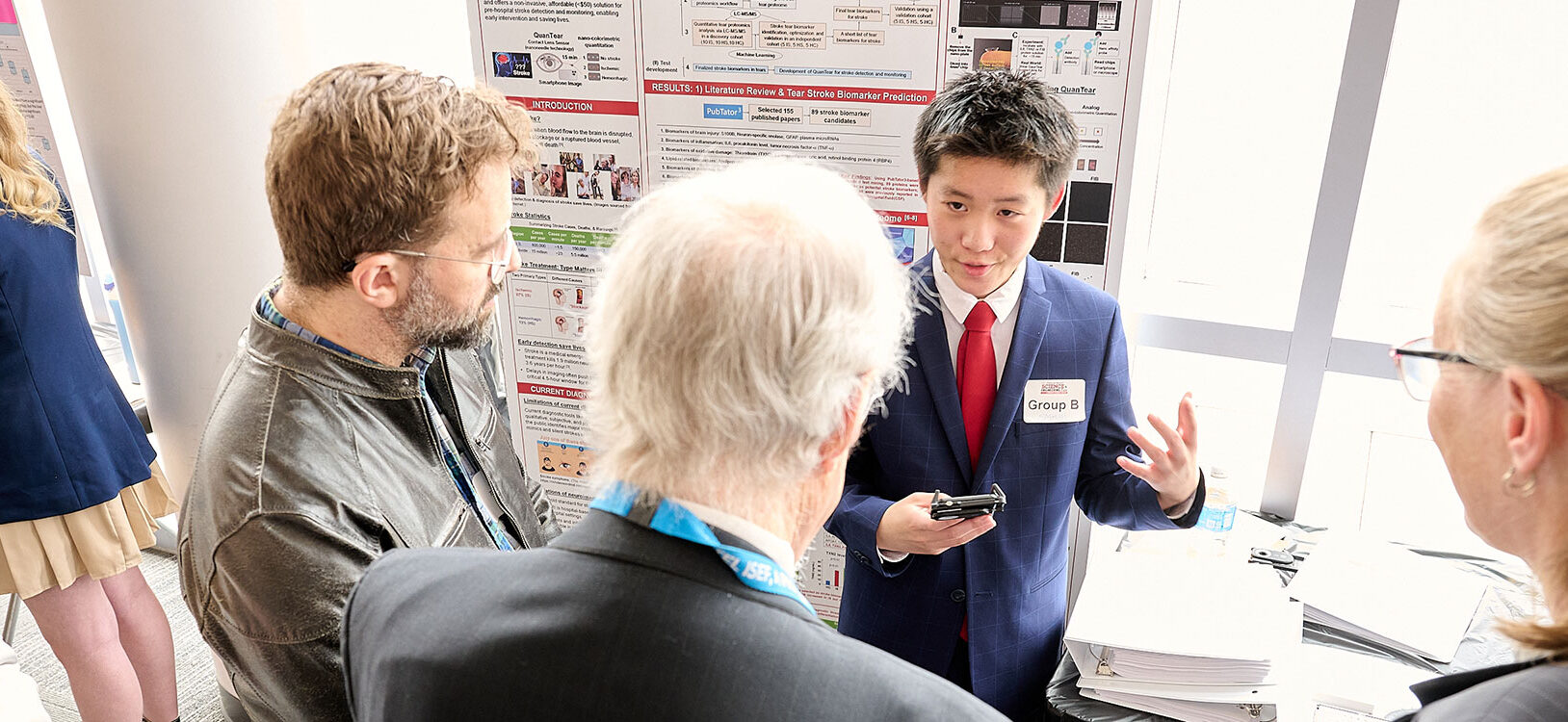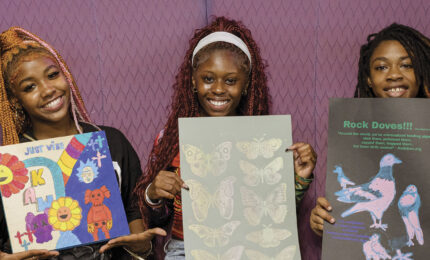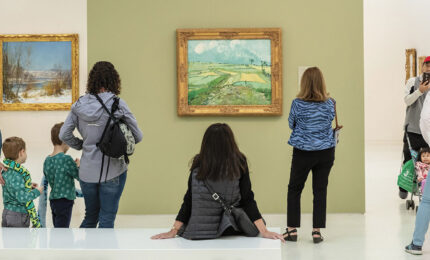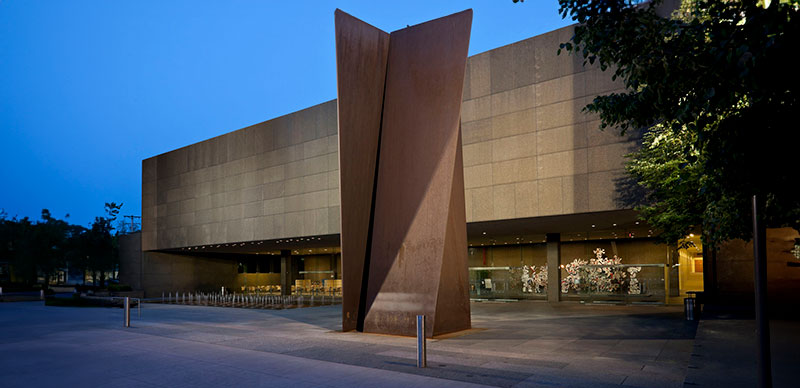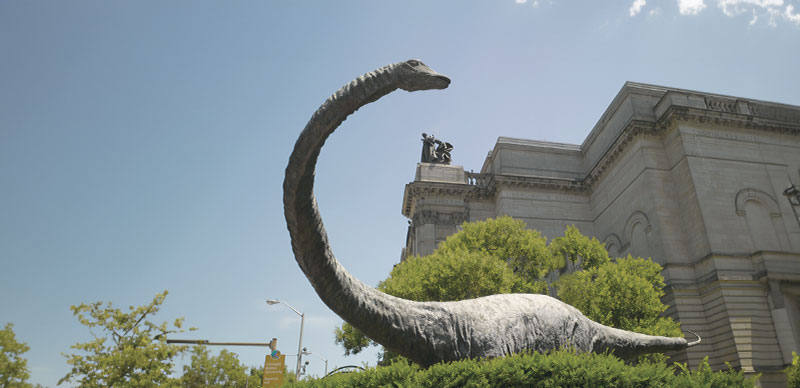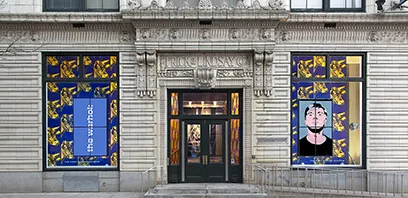As this past school year approached, Brad Adams was chatting with his daughter, a high school junior, about the upcoming Pittsburgh Regional Science & Engineering Fair.
“She started doing the Science Fair in the ninth grade and said, ‘I wish there was this opportunity in the sixth or seventh grade,’” recalls Adams, who teaches at Indiana Area Junior High School alongside his wife, Lisa. “That’s a conversation at home that got us involved in research. What about our sixth, seventh, and eighth graders?”
Previously, due to financial and logistic constraints, Indiana’s middle school had not been among the dozens throughout western Pennsylvania and Maryland to send kids to the Science Fair, a Pittsburgh tradition that dates back to 1940.
But Brad Adams’ conversation with his daughter would turn out to be well timed.
Shortly thereafter, he discovered an opportunity to get his own middle school students involved in the Science Fair, hosted by Carnegie Science Center in early April.
Thanks to grants via the Science Center’s Lucchino Science Inspiration Fund, Adams was able to bring 23 first-time students to the North Shore, where they presented projects about all things science at the regional science competition.
Featuring 230 judges and 65 volunteers, the 86th annual iteration of the event attracted 476 students from 75 middle and high schools.
Increasing access to Science Center events and resources is the objective of the Science Inspiration Fund, which was established six years ago and offers grants to middle schoolers.
“We’re trying to get students to participate who wouldn’t otherwise participate,” says Steve Kovac, associate museum director for service & engagement at the Science Center. “The kids that we’re trying to reach are ones that maybe don’t have a mentor or role model or someone to show them that, ‘Hey, this is something you can do.’ We’re trying to even the playing field between where they fall in terms of ZIP code and what kind of access they have.”
While Adams had been interested in getting his students to the Science Fair, the commitment and coordination of doing so seemed daunting.
That’s where the Science Inspiration Fund came in, providing teachers with stipends and workshops while reimbursing students for the material costs of their research projects.
“It took a lot of the anxiety away,” Adams says. “How do you get started? How do you get the kids to dip into an actual subject that they’re interested in?”
Brady, a sixth grader from Indiana Area School District, was one of the students participating in the Science Fair for the first time.
Inspired by a family member who deals with acid reflux, Brady’s project examined the acidity of various fruits—including lemons, limes, oranges, and grapefruit—in order to better encourage their dietary decisions. (Of note: Eat more grapefruit and oranges, fewer lemons and limes.)
“I really liked it because it’s about science and showing your mind to people, showing what you know,” Brady says of his first experience. “I really love chemistry, first of all, and some people have acid reflux problems, so they should know this information.”
“There are some incredibly bright students out there, and that’s the great thing about the Science Fair—it taps their potential in a way that doesn’t get tapped by writing down notes, reading them, taking a test, or taking the SAT.”
Jason Brown, Henry Buhl, Jr., Director of the Science Center
Indiana Area Senior High School also sent students, one of whom went on to be selected for an all-expenses-paid trip to the prestigious International Science & Engineering Fair in May for her project about integrating prosthetic materials with the human body. They joined students from other schools around the region who explored a variety of subjects, such as the culinary arts (the best way to bake a cheesecake) and the future of robotics in medicine (how to improve recovery times from surgery), as well as botany (which fruits grow best in Pittsburgh).
Alegria, an eighth grader at St. Kilian Parish School in Cranberry, focused her project on the impact of platforms such as TikTok, Instagram, and Facebook on child learning development based on her mom’s belief that nothing good comes from kids having access to social media.
“My mom was like, ‘You’re going to hurt your brain. You’re not going to retain information as well,’” Alegria says. “So, I was like, ‘I’m going to prove you wrong!’”
After her Science Fair project, Alegria will enter the next debate with her mom about the perils of kids’ social media consumption equipped with new insights: Her experiment showed that being distracted by social media had less of an impact on puzzle completion times among her tween and teenage subjects than it did people in their 20s.
Others won cash prizes, recognition from judges, and college scholarships. But for all attendees, the Science Fair was a chance to explore their curiosity and dig deep into the topics and issues that most interested them.
“There are some incredibly bright students out there, and that’s the great thing about the Science Fair—it taps their potential in a way that doesn’t get tapped by writing down notes, reading them, taking a test, or taking the SAT,” says Jason Brown, Henry Buhl, Jr., Director of the Science Center.
“This is a totally different way of tapping into that world of brilliance. Our goal is to have a science fair that represents everyone—all of the districts from around the region.”
